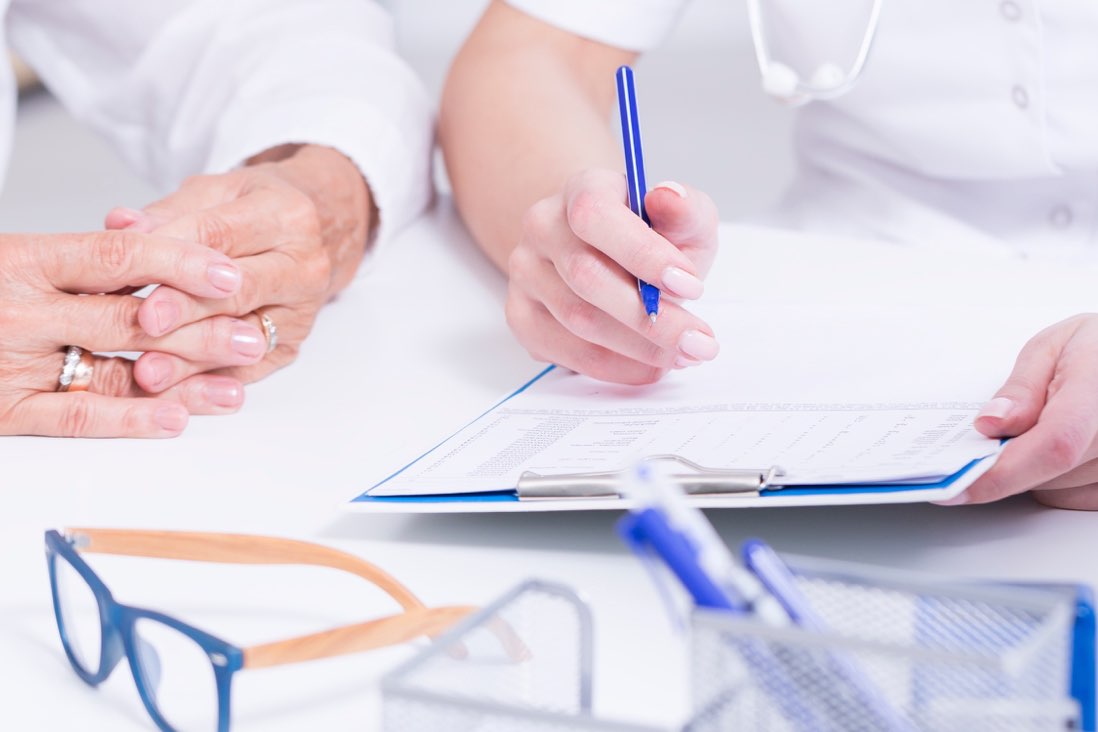5 Los malentendidos comunes sobre la enfermedad de la tiroides
Ya sea el médico de familia, endocrinólogo, quiropráctico o un herbolario, no podrá obtener información directamente relacionada con su tiroides. Aquí hay cinco mitos y los bits de información errónea que son muy propensos a escuchar, junto con la historia real que necesita saber muy comunes.
1. sus niveles son normales
En primer lugar, lo que hace “normal” significa. Hace una década, la comunidad médica se fue por la norma que .5 a 5.0 en la prueba de sangre hormona estimulante del tiroides (TSH) fue el rango normal. Si su TSH estaba por debajo de 0,5, eras hipertiroidismo / hiperactiva. Si su TSH estaba por encima de 5,0, que eras hipotiroidismo / baja actividad. En 2002, tanto la Asociación Americana de Endocrinólogos Clínicos y La Academia Nacional de Bioquímica Clínica de “Directrices Prácticas de Laboratorio Medicina” recomienda que el rango normal revisarse para .3 a 3.0. Luego, varios años más tarde, abandonaron estas recomendaciones. Es posible que tenga un nivel de TSH en el rango de referencia “normal”, pero si se encuentra en el extremo más alto de la gama, algunos médicos no creen que necesariamente normal o saludable para usted. Cuando un médico le dice que sus niveles son “normales”, preguntar qué “rango normal” él / ella en realidad está utilizando para hacer esa determinación.
2. Si usted tiene un problema de tiroides, Tomar yodo o Kelp
Natural health practitioners who don’t truly understand thyroid function are often quick to tell you that “thyroid problems mean you need iodine” or iodine-containing herbs or supplements, such as kelp, bladderwrack and bugleweed. If you are truly iodine deficient, iodine may be able to help your thyroid. Studies have shown that iodine deficiency is actually on the rise in the U.S., and about 12% of the U.S. population is currently iodine deficient, up from less than 3 percent in the early 1970s. So, for some people, iodine deficiency may be a factor in their thyroid problem. But for some people, iodine or iodine-containing products make worsen autoimmune thyroid problems such as Hashimoto’s and Graves’ disease, and cause enlargement of the thyroid (goiter). Before you start iodine, consider having urinary iodine measured to see if you have an actual deficiency, and pay close attention to any symptoms that develop after you start to take iodine.
3. Usted tiene enfermedad de Graves / hipertiroidismo y necesitan el yodo radiactivo tratamiento (RAI)
Cuando se trata de la enfermedad tiroidea autoinmune, enfermedad de Hashimoto, que por lo general resulta en hipotiroidismo, es la más común que la enfermedad de Graves, que causa el hipertiroidismo. En algunas etapas de la enfermedad de Hashimoto, sin embargo, y en particular, a menudo durante las primeras etapas, la tiroides que se encuentra en el proceso de fallo autoinmune en realidad puede brotar en acción y volverse temporalmente hiperactiva, haciendo un hipertiroidismo persona. A veces, son los síntomas de la ansiedad, palpitaciones, pulso rápido, pérdida de peso, diarrea, insomnio, que primero deben tenderse de un Hashimoto al médico hipertiroidismo temporales.
Unfortunately, some doctors order a TSH test, see the low TSH that is characteristic of hyperthyroidism, and recommend radioactive iodine treatment—a usually permanent treatment that disables your thyroid, and makes you hypothyroid for life. The problem is that in these cases, it’s not Graves’ disease, and the hyperthyroidism is just temporary, a condition known as “Hashitoxicosis.” In this case, you may have a temporary period of hyperthyroidism, but actually be your way to becoming hypothyroid. In some cases, unless the hyperthyroidism is life-threatening and uncontrollable using drugs, the expensive radiation treatment is needless administered. If you are told that you have Graves’ disease or hyperthyroidism, and are rushed to have RAI, insist on blood tests for antibodies that confirm Graves’ disease, as well as imaging tests. You want your physician to demonstrate that you do indeed have Graves’/hyperthyroidism, and are not just experiencing temporary Hashitoxicosis.
4. temperatura corporal basal puede diagnosticar hipotiroidismo
Here is a situation where a clinical sign—low body temperature, has been turned into a “one size fits all” diagnostic tool that simply doesn’t work. It’s medically known that thyroid hormones have a direct effect on the basal, or resting, metabolic rate. And while hypothermia, or lowered body temperature, is a known and medically accepted symptom of hypothyroidism, some practitioners believe that body temperature is an infallible diagnostic tool. The late Broda Barnes, M.D. made the public more widely aware of the use of axillary (underarm) basal body temperature (BBT) as a symptom and diagnostic tool for hypothyroidism. It is a diagnostic and monitoring method still used by some complementary and alternative practitioners.
To measure your BBT, use a special BBT thermometer. As soon as you awake, with minimal movement, put the thermometer in your armpit, next to the skin, and leave it for ten minutes. Record the readings for three to five consecutive days. Women who still have their menstrual period should not test on the first five days of their period but can begin on day five. Men, and girls and women who are not menstruating can test any time of the month. If the average BBT is below 97.6 Fahrenheit, some complementary practitioners would consider a diagnosis of an underfunctioning thyroid or insufficient thyroid hormone replacement. An average BBT between 97.8 and 98.2 is considered normal. Temperatures from 97.6 to 98.0 degrees Fahrenheit are considered evidence of possible hypothyroidism, and temperatures less than 97.6 degrees can be even more indicative of hypothyroidism. Some practitioners, however, consider any temperature under 98 degrees to be indicative of hypothyroidism. Use of basal body temperature is controversial, however, and even those practitioners who use the test caution that it should be part of an overall approach, and not solely relied upon.
5. El único tratamiento para el hipotiroidismo es Synthroid
Perhaps one of the most common fallacies doctors regularly repeat is that Synthroid is the only treatment for hypothyroidism. Actually, Synthroid is a brand name for the drug “levothyroxine”—a synthetic form of the thyroid hormone thyroxine, also known as T4. Synthroid happens to be the top-selling brand-name levothyroxine drug, primarily due to its marketing. Synthroid, however, is almost always the most expensive levothyroxine. Other brands, considered equally effective by many practitioners, and almost always less expensive, include Levoxyl and Unithroid. Some patients find that they respond best to a one brand—not necessarily Synthroid—due to the way that brand dissolves and is absorbed, or the fillers and dyes used by the different manufacturers. In addition to the levothyroxine drugs, there is also liothyronine—the generic name for the T3 hormone. The brand name is Cytomel. Adding T3 to levothyroxine has been found to help some thyroid patients relieve symptoms more effectively than levothyroxine (T4) alone.
Finalmente, existe la categoría de medicamentos recetados conocidos como tiroides desecada natural. No los confunda con los suplementos de tiroides glandular de venta libre; no son lo mismo. La tiroides desecada natural recetada (la marca principal es Armour Thyroid, pero también están disponibles Nature-throid, Thyroid WP y un genérico fabricado por Acella) se elabora a partir de la glándula tiroides seca de los cerdos. Incluye T4 y T3 naturales, además de otras hormonas tiroideas menos conocidas, como T2, T1. Algunos médicos, y en particular los expertos en salud integral, integral y natural, encuentran que la tiroides natural es óptima para algunos pacientes.
Fuentes: Muy bien, Braverman, L, Cooper D. Werner & Ingbar's The Thyroid, décima edición. WLL / Wolters Kluwer; 2012.

